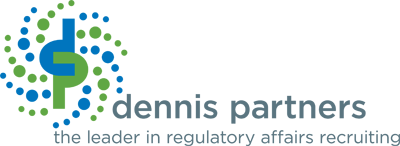People Analytics: The Big Data of the Employment World
What if high tech companies knew why top engineers quit and how to build work environments that would get people to stay? What if product companies could analyze the demographic and experiential factors that correlate with high-performing sales people? What if healthcare companies could determine why certain hospitals have higher infection rates and what people issues are behind these problems? Today these outcomes are being achieved through the use of people analytics, providing leaders with keen insight into employee behavior that is needed to make critical workforce decisions.
“People analytics work by gathering workforce data – experience, demographics, work history, etc. – and feeding this information into advanced computer models,” says Anne Hayden, vice president of human resources for MRINetwork. “Leaders can leverage this information to help gauge, predict and make decisions about everything from retention probability to what will motivate top sales people in the organization.”
Matching data elements to human capital needs in a way that impacts decision making yields a number of key benefits:
- Reducing attrition. Identifying top employees who are about to leave the company can save a company millions of dollars in lost talent. Factors such as location, pay scale and personality type can be fed into an analytics system to pinpoint staff who are most likely to exit. From here managers can spark conversations with direct reports about how to evolve their roles, increasing the odds of preserving the best people in the company.
- Anticipating performance. Impressive credentials cannot truly predict a candidate’s on-the-job performance. People analytics addresses this gap by helping to identify candidates who are unlikely to mesh with a company’s corporate culture. Hiring managers can then decide on additional line of questioning that will provide more insight as to whether applicants will be a good fit.
- Enhancing employee morale. Analytics leveraged though simple employee surveys can gauge levels of dissatisfaction, and point to initiatives such as career-development planning and connecting high performers with training programs that will boost employee morale and willingness to stay on board. This type of data can be especially helpful in uncovering company-wide issues that employees may be reluctant to share face-to-face with leadership.
According to Deloitte’s Global Human Capital Trends 2016 report, 77 percent of all organizations believe people analytics is important; successful implementation, however, depends on getting the process right.
Hayden recommends the following for applying people analytics to your company:
- Stay focused on business priorities. Start with problems management cares about, such as sales productivity, product quality or customer retention. Spend time where the company makes money, and people analytics projects will pay for themselves.
- Build a people analytics team. Building an analytics model alone will not solve business problems. Companies must recruit the right talent and integrate analytics efforts, involving various business partners and consultants on employee engagement, recruitment analytics, learning analytics, compensation analytics, and workforce planning. A successful analytics team will engage directly with the business and help apply the findings to real interventions or management changes.
- Explore new technologies. Nearly every talent management provider now offers off-the-shelf analytics. Teams need to find the right mix of technologies to look at their data in an integrated way that represents the various domains of the analytics team members.
- Invest in cleaning data. The highest value in analytics comes after the company is running a reliable database. Out-of-date employee records, for example, can provide analysts with less-than-accurate information. Only by establishing best practices for scrubbing, migrating, collecting and analyzing data can valuable business insights be extracted.
- Focus on security, privacy, and anonymity. Leading organizations define security policies as part of their people analytics governance early in the process. They realize the importance of understanding the complex issues surrounding data security, privacy and identity protection up front.
The strategic goals of any organization are enabled by the successful performance of its workforce. “Rich data sources, coupled with analytics capabilities and tools, reveal how people are contributing to the desired outcomes, defining ways to maximize business performance,” adds Hayden. “Analytics are no longer an abstract concept; when you combine them with the human aspect of assessing a candidate or employee’s experience, skills, cultural fit and potential within the organization, you are left with a more well-rounded approach to building and engaging strong teams.”
